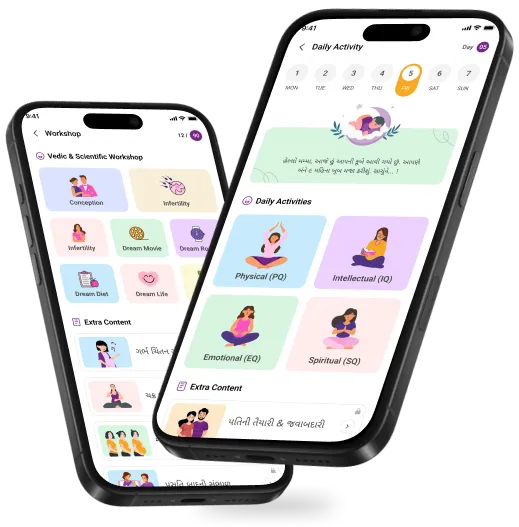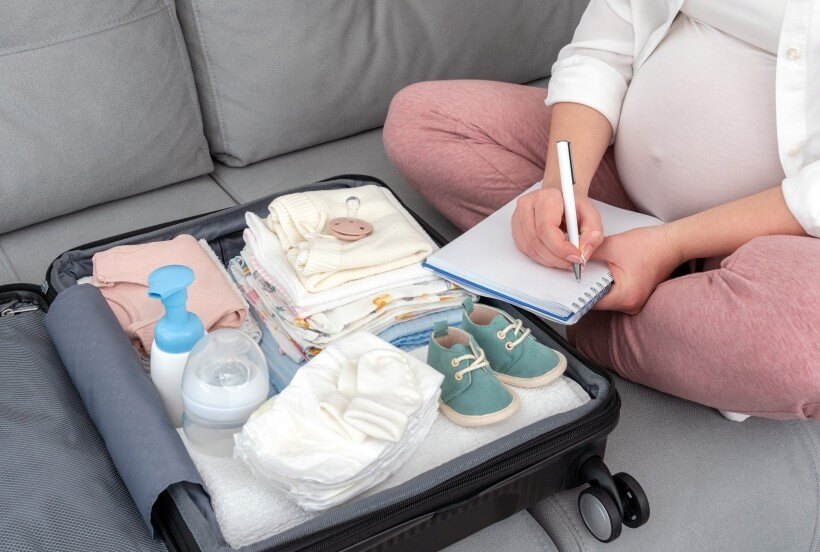Pregnancy is a miraculous journey for both the mother and the growing baby. Amniotic Fluid is found within the first 12 days after conception in the amniotic sac around the growing baby in the womb. Amniotic fluid has many important functions and it helps in the development of a baby.
If the amount of fluid in the womb is more or less, problems can occur.
Picture this: inside mommy’s tummy, there’s this super cool liquid called amniotic fluid. It’s like a soft cushion for the baby, making sure every kick and wiggle feels like a cozy hug. But that’s not all! It also keeps the baby safe from any bumps and bruises, like a super-powered bodyguard.
In this article we will see many functions of amniotic fluid and what happens when fluid is too high or too low.
What is Amniotic Fluid?

During pregnancy, your fetus is protected in a fluid-filled sac (amniotic sac) inside the uterus. The amniotic sac is made up of two membranes - amnion and chorion membranes. These membranes keep your baby safely enclosed in a sac of amniotic fluid.
These membranes usually rupture during labour, when your baby is ready to be born and the fluid is expelled. This is called the rupture of the water bag.
Functions of Amniotic Fluid
- Protecting the fetus: The fluid cushions the baby from outside pressure.
- Temperature control: The fluid covers the baby, keeping it warm and maintaining a regular temperature.
- Infection control: The fluid contains antibodies which protect baby against infection.
- Lung and Digestive system Development: By breathing and swallowing the amniotic fluid, the baby practices using the muscles of these systems as they grow.
- Muscle and Bone Development: As the baby floats, inside the amniotic sac, it can move in the womb to develop muscles and bones.
Normal level of Amniotic Fluid

The baby regularly swallows amniotic fluid and it passes out of the baby’s body in the form of urine. This means that the amount of fluid in the amniotic sac usually fluctuates daily.
As pregnancy progresses, the amount of amniotic fluid also increases. There is only a small amount of fluid during early pregnancy, but around 36 weeks of pregnancy this fluid increases to 800 to 1000 ml. After 38 weeks it starts decreasing gradually till the birth of the baby. When there is very little amniotic fluid around the baby, it is called oligohydramnios. When the amount of this fluid is too much, the condition is called polyhydramnios or hydramnios.
Amniotic Fluid Level Examination

Your doctor may also check your amniotic fluid levels if you have any of the following risk factors for having a low birth weight baby:
- Previously given birth to a small baby for gestational age or a low birth.
- High Blood pressure
If your doctors suspect, you need to have an ultrasound scan done.
The medical sonographer will look at the entire amniotic sac and check the fluid level. They will check the depth of the largest pocket of amniotic fluid in the womb. Normal levels of amniotic fluid are already set for each week of pregnancy, so your levels will be compared to these normal levels of amniotic fluid. A normal amniotic fluid index is 5 to 25 cm. A measurement less than 2 cm is considered very low.
{{cool-component}}
What are the reasons for low Amniotic Fluid Levels?
Oligohydramnios, commonly known as low amniotic fluid is a condition in which, a pregnant woman has too little amniotic fluid. There are a lot of reasons for low amniotic fluid levels.
The condition of low amniotic fluid can occur at any time during pregnancy. However, it is most common during the last trimester.
- Post-term Pregnancy: If a woman has passed her due date by two weeks or more, she may be at a high risk for this condition as the fluids can decrease by half, after she reaches 42 weeks’ gestation.
- Placental Insufficiency: There is a problem with your placenta.
- Medical Treatment: some medicines can also affect the level of amniotic fluid.
- Genetic Disorders: If your baby has any genetic or medical problem with the urinary system.
- Twin Pregnancy: Growth restriction of one of your identical twins can also lead to low amniotic fluid levels.
Effects of Low Amniotic Fluid on the Baby
Oligohydramnios, commonly known as low amniotic fluid in a pregnant woman. There are a lot of reasons behind low amniotic fluid levels.
The condition of low amniotic fluid can occur at any time during pregnancy but is most common during the last trimester. Low levels of amniotic fluid can cause problems in the baby’s growth and lung development. If it is low in the first trimester and the beginning of the second trimester chances of miscarriage increase and can lead to stillbirth. In most cases, the reason for this is the rupture of the water bag. If the sacs rupture, your doctor will closely monitor your fluid level and baby’s growth. You may even need to take extra fluids through the vein (intravenous fluids).
Complications may arise during delivery due to low amniotic. For example, your baby is in a breech position with its head up and buttocks down.
What should you do when Amniotic Fluid is low?
Being diagnosed with low amniotic fluid can be worrying. The best thing you can do for your baby are:
- Focus on staying healthy yourself.
- Go to all medical check-ups regularly.
- Stay hydrated.
- Eat nutritious and balanced diet
- Rest as much as possible.
Rupture Water Bag

If the amniotic sac ruptures, the water may either come out in a sudden torrent. If the amniotic sac ruptures slightly the fluid may flow out slowly. Sometimes it is difficult to differentiate whether the water sac has burst or there has been an accidental flow of urine. If you are unsure whether your waters have ruptured or not, contact your doctor immediately. If your waters burst but labor does not begin, you are at risk of infection. If you have signs of infection, antibiotics may be given.
{{cool-component-1}}
Last Treatment Option
If your waters have ruptured before 36 weeks, you may be advised to take antibiotics to continue your pregnancy and protect you from infection. The antibiotics given are safe for you and your baby. Depending on what week of pregnancy you are in you may also be given steroids if needed. Although the doctor will try to keep the baby in the womb for as long as possible, if complications arise, he may also advise you to induce labor.
If labor is not induced, you will be monitored closely until natural labor begins. Sometimes a crack or a hole in the amniotic sac closes on its own, and your fluid stops flowing. The doctor will keep an eye on the health of you and your baby and will decide the best time to give birth to the baby.
Conclusion

In the miraculous world of pregnancy, the amniotic fluid plays the role of a guardian angel surrounding the baby in the womb. It’s not just a simple liquid! From cushioning those little kicks to providing a safe space it’s all about keeping the baby comfy and cosy.
But wait, there’s more! This magical fluid also shields the baby from any bumps and bruises as mom goes about her day. And let’s not forget it is constantly renewing itself to keep the environment right for the baby’s growth and development.
So, there you have it! Amniotic fluid is like a superhero in mommy's tummy, keeping the baby safe, cosy, and ready for the big world. Cheers to this amazing liquid that makes growing up in the womb feel like a fantastic adventure!
In conclusion, amniotic fluid is important in protecting the fetus in the womb. Understanding its function sheds light on the support it offers to fetal development, showing the wonders of nature in nurturing new life!!
Disclaimer: This blog is correct as per the writer's knowledge. This is not medical guidance. Follow as you are responsible for.












.webp)

.webp)





